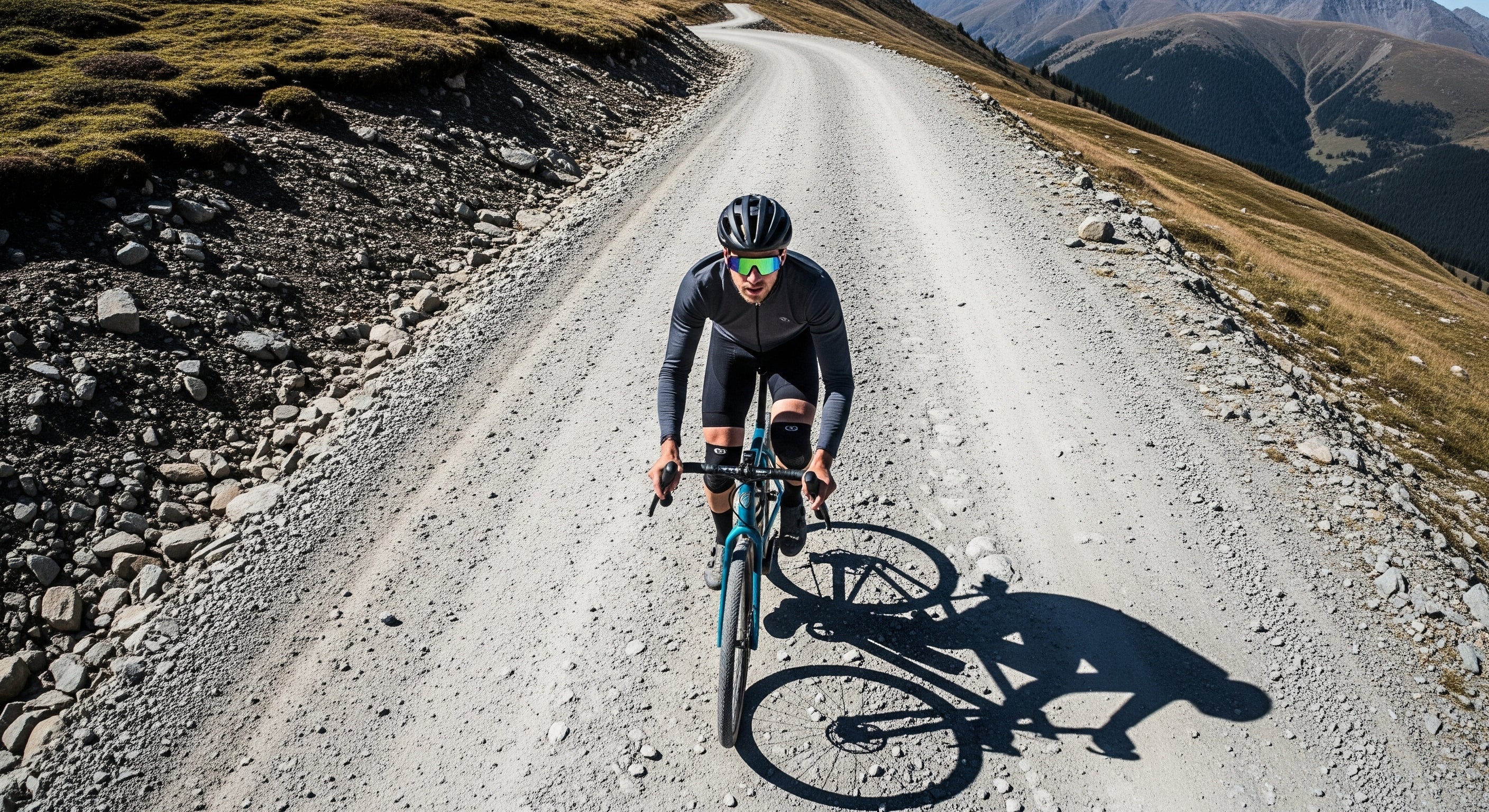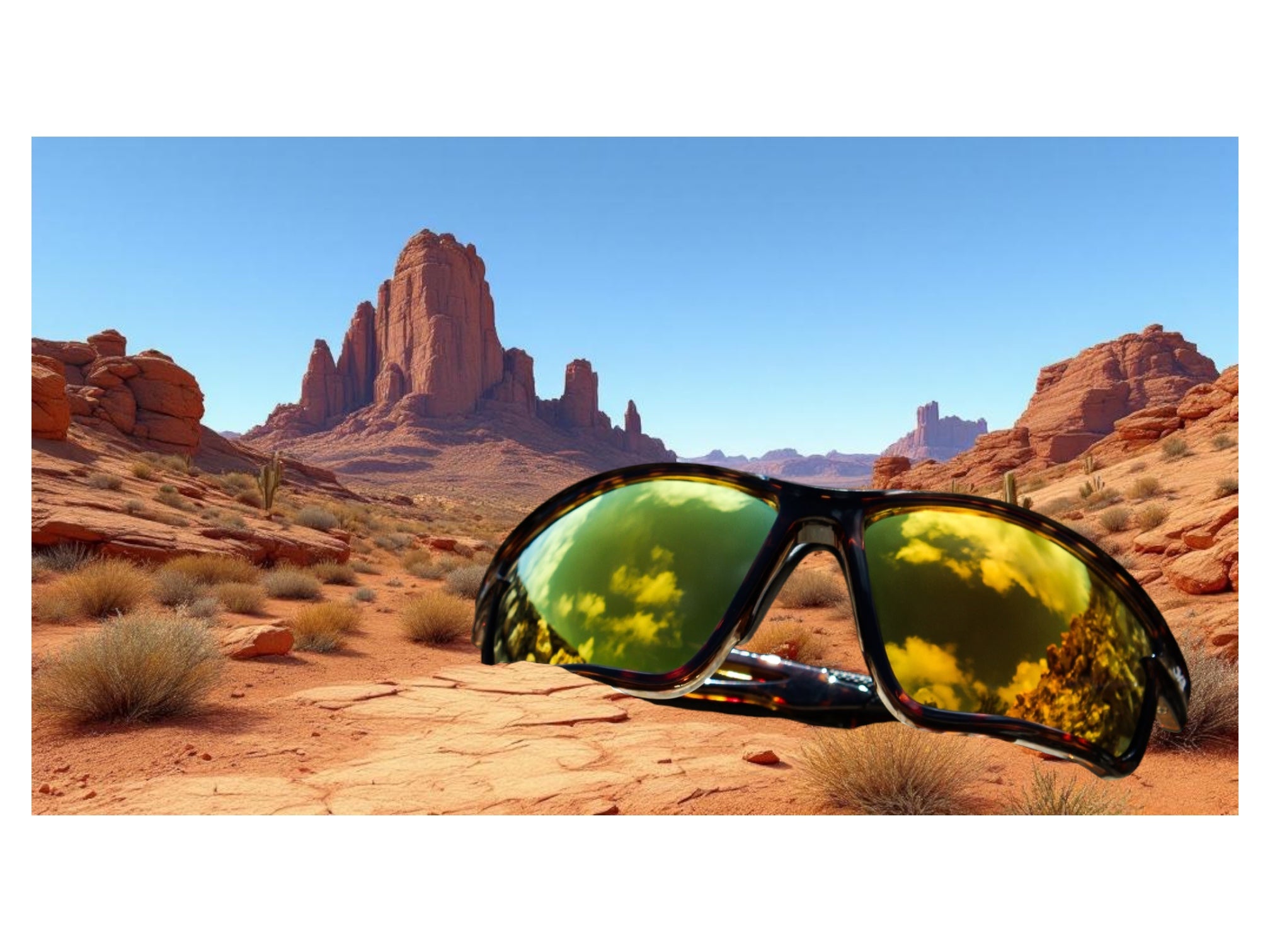Understanding the Importance of Gravel Sunglasses for Cyclists
Cyclists who venture out on gravel roads face unique environmental challenges that demand specialized eyewear. Gravel sunglasses are not just accessories; they serve as essential tools for safety, comfort, and performance. These sunglasses are meticulously designed to cater to the specific needs of gravel riders, offering protection against natural and situational hazards.
One of the key features of gravel sunglasses is their ability to shield the eyes from debris. Gravel cycling often involves riding through zones with loose rocks, dust, and even mud. Without proper eyewear, particles kicked up by the tires or wind can impair vision or cause irritation, making sunglasses crucial for maintaining focus on the trail. Additionally, they provide protection against insects or low-hanging branches that cyclists may encounter during off-road adventures.
Visual clarity is another significant advantage provided by gravel sunglasses. The lenses are typically crafted with advanced technologies such as polarization or photochromic capabilities. These features help reduce glare from sunlight bouncing off reflective surfaces, such as water puddles or metallic objects. Riders can transition seamlessly between bright, sunny stretches and shaded woodland paths, ensuring their eyes are neither strained nor overexposed.
Comfort plays a pivotal role in the design and use of gravel sunglasses. Most models are lightweight and feature nose pads and temple grips for stability during rough terrain. Riders encounter consistent vibrations when navigating uneven paths, and sunglasses that stay securely in place enable them to focus on handling rather than adjusting eyewear constantly.
Furthermore, gravel sunglasses serve as a barrier against harmful UV radiation. Extended exposure to sunlight during long rides can damage eye health over time. Lenses with robust UV protection safeguard cyclists from these risks while enhancing visibility. Some styles also have a wraparound frame design, preventing sunlight from seeping in through the sides and providing a more immersive shield.
In summary, gravel sunglasses cater to the specialized demands of cyclists exploring rugged terrain, combining protection, comfort, and performance enhancement into one indispensable accessory. By filtering out environmental hazards and optimizing visual clarity, they play a critical role in ensuring safe and enjoyable rides.
|
Key Features to Look for in Gravel Cycling Sunglasses
Gravel cycling sunglasses must provide more than just style—they need to enhance performance, protect the eyes, and withstand the rigors of mixed-terrain riding. While aesthetics are important, functionality is paramount. Choosing the right pair requires evaluating specific features tailored to the demands of gravel cycling.
1. Lens Quality and Versatility
High-quality lenses are crucial for enhanced visibility and eye protection. Gravel cyclists should look for:
- UV Protection: Sunglasses must block 100% of UVA and UVB rays to protect the eyes.
- Photochromic Lenses: These automatically adjust their tint based on lighting conditions, making them ideal for variable environments like shaded forest trails or sunlit plains.
- Anti-Fog and Ventilation Design: Prevent lenses from fogging during intense rides or high-humidity conditions.
- Impact Resistance: Opt for shatter-resistant polycarbonate or similar materials to guard against flying debris.
2. Frame Considerations
Durable and comfortable frames ensure sunglasses stay functional and secure throughout the ride. Important features include:
- Lightweight Materials: Frames made of materials like TR-90 nylon balance strength with comfort.
- Adjustable Nose and Temple Pads: These provide a snug fit, reducing movement during bumpy rides.
- Grippy Elements: Non-slip rubber on key contact points helps keep the glasses in place, even when sweating.
3. Coverage and Fit
Optimal coverage prevents debris, dust, wind, or sunlight from interfering with vision. Cyclists should select:
- Wraparound Designs: These ensure wide peripheral protection, critical on gravel terrain.
- Customizable Fit: Sunglasses should integrate well with helmets and avoid pressure on the ears or temples.
4. Interchangeable Lenses
Cyclists tackling diverse environments benefit from sunglasses with interchangeable lenses. This feature allows users to switch lenses tailored to specific lighting conditions, maximizing adaptability.
5. Polarization
Though not always necessary, polarized lenses can reduce glare, especially in bright, open areas or near reflective surfaces like puddles. Gravel riders should assess how much glare interference they encounter.
6. Durability
Gravel routes often test equipment to the limit. Cyclists should prioritize sunglasses built to withstand impacts, dirt, and frequent washes without losing integrity.
Selecting gravel cycling sunglasses with these features ensures improved comfort, visibility, and eye protection across varying terrains.
Lens Technology: Choosing the Right Tint for Your Ride
Selecting the ideal lens tint is a crucial step in finding gravel cycling sunglasses that enhance both visibility and comfort. Lens tints impact how light is filtered and perceived, so understanding their functionality can make a significant difference during rides. Different environments, lighting conditions, and personal preferences all play a role in determining the most suitable tint.
One of the primary considerations is ambient light. For bright, sunny conditions, darker tints such as gray or smoked lenses work well. These lenses reduce overall brightness without distorting colors, offering a more natural visual experience. On the other hand, cyclists who ride during early mornings or late evenings should opt for lighter tints like yellow or amber. These colors enhance contrast and improve visibility by making objects appear sharper, even in low-light conditions.
Riders who frequently face variable lighting conditions—such as wooded trails opening into bright fields—should consider photochromic lenses. These lenses automatically adjust their tint level based on the intensity of sunlight, ensuring optimal sight throughout the ride. Photochromic technology eliminates the need to swap lenses mid-ride, making it a convenient choice for gravel cycling.
Certain tints are also tailored for specific terrains. For example, brown or copper lenses heighten contrast in dusty environments, making them ideal for off-road gravel paths. Similarly, rose-tinted lenses enhance depth perception, which is beneficial for identifying dips and obstacles on uneven trails. Mirrored coatings can also be considered for reducing glare, especially in areas with strong reflective surfaces.
Anti-reflective and polarized lenses offer additional advantages by minimizing glare and improving clarity. While anti-reflective coatings reduce visual distractions caused by sunlight bouncing inside the lens, polarized lenses are particularly helpful near water or wet roads, where glare can be more pronounced. Riders should note, however, that polarization may sometimes interfere with digital displays on cycling computers.
Weather resilience should not be overlooked. Some modern lenses feature hydrophobic and oleophobic coatings, which repel water, sweat, and dirt, ensuring the view remains clear. UV protection is another non-negotiable feature to safeguard the eyes from harmful rays during long hours under the sun.
Making an informed decision about lens tint begins with recognizing the demands of the specific environments and conditions where rides are most frequent. By pairing the right technology with the right conditions, cyclists can ensure both visual comfort and enhanced performance on the gravel roads.
Frame Durability and Material Considerations
When choosing gravel sunglasses, assessing the durability of the frame and its material is vital to ensuring long-term performance and comfort during rides. Gravel cycling exposes riders to rugged terrain, unpredictable weather, and repeated jarring impacts, so glasses need to withstand these demanding conditions while maintaining their shape and functionality.
Materials play a significant role in determining both durability and weight. Most high-quality sunglasses frames for cycling are made from polycarbonate or TR90 nylon. Polycarbonate is known for its lightweight characteristic and resistance to shattering, making it particularly suitable for gravel cycling where falls or collisions may occur. TR90 nylon offers excellent flexibility and is resistant to stress, allowing the frames to endure repeated flex without cracking—a feature cyclists appreciate for handling frequent adjustments. In premium models, some frames may incorporate reinforced polymer composites or carbon fiber for an unparalleled balance of strength and weight.
Cyclists should evaluate the construction techniques used for the frame. Injection-molded frames offer consistent material quality and structural integrity, reducing the risk of weak points developing after prolonged use. Additionally, hinge design is another critical aspect; durable, high-quality hinges will ensure the sunglasses open and close smoothly while resisting wear or accidental damage over time. Metal hinges, or those integrated into the frame itself, generally outperform less robust options.
Protection against environmental elements should also be considered. UV exposure, mud, and moisture continuously come into contact with sunglasses during rides. Frames with scratch-resistant coatings and hydrophobic properties help maintain their appearance and functionality in hostile conditions. Examining whether the material can resist discoloration or warping from sunlight or perspiration is equally crucial for longevity.
Ultimately, careful consideration of the frame material, construction, and resistance to external factors enables riders to enjoy reliable and high-performing sunglasses for challenging gravel adventures.
Fit and Comfort: Ensuring Sunglasses Stay Secure During Rides
The importance of fit and comfort cannot be overstated when choosing sunglasses for gravel cycling. Properly fitting sunglasses prevent unnecessary distractions, ensuring focus and safety during rides on unpredictable terrain. Cyclists require eyewear that remains secure during sudden movements and longer rides, making comfort and fit essential considerations for performance and enjoyment.
Gravel cycling often involves bumpy roads and shifting positions. Sunglasses designed for this activity frequently include features that enhance grip and stability. Rubberized nose pads and temple tips, for instance, help keep sunglasses in place even when sweating or navigating rough tracks. These materials adapt to the skin and provide a secure hold without causing irritation.
Fit goes beyond the shape or size of the sunglasses. Cyclists should also consider the frame's flexibility for adaptability to various face shapes. While some riders prefer snug-fitting glasses to minimize movement, others may opt for adjustable or semi-rigid frames that cater to specific preferences. Glasses that compress excessively can lead to discomfort on longer rides, making it necessary to test different designs for pressure points.
Many premium sunglasses offer customizable options such as adjustable arms or interchangeable nose pieces. These features ensure an optimal fit tailored to individual needs. Cyclists should use these options to refine and perfect the fit for both short sprints and endurance events.
Weight is another crucial factor impacting comfort. Lightweight frames reduce pressure on the nose and ears, enhancing overall wearability. However, glasses should remain durable enough to withstand exposure to gravel dust, rough handling, and unpredictable environmental factors. A balance of lightweight construction and rugged durability ensures practical usability on diverse terrains.
Ventilation and airflow also play a role in comfort. Poorly ventilated sunglasses can lead to fogging, which obscures vision and causes discomfort. Frames with integrated ventilation channels or strategically positioned gaps allow airflow to circulate effectively, minimizing fogging and maximizing clarity.
It is recommended that cyclists try on multiple pairs before making a purchase. Testing sunglasses under conditions similar to gravel rides, such as movement or sweating, helps confirm whether the fit remains secure. Opting for designs with features tailored to motion and perspiration ensures a reliable choice for demanding journeys.
UV Protection and Eye Safety: Essential Elements in Gravel Sunglasses
When cycling on gravel trails, the importance of UV protection cannot be overstated. Ultraviolet radiation from the sun has long-term effects on eye health, including risks such as macular degeneration, cataracts, and photokeratitis. Gravel sunglasses with lenses designed to block 100% of UVA and UVB rays ensure that cyclists can enjoy hours under the sun without compromising their vision. Many manufacturers also include UV400 protection, which blocks wavelengths as small as 400 nanometers, offering comprehensive coverage against harmful rays.
Eye safety goes beyond UV protection, as gravel cycling poses exposure to debris, dust, and dirt kicked up by your tires or a fellow cyclist’s wheels. High-impact polycarbonate or TR90 lenses are industry standards for gravel sunglasses, providing shatter-resistant properties to guard your eyes against flying particles. Ensuring lenses are impact-tested and compliant with ANSI or CE safety certifications is an essential step when selecting sunglasses.
For additional safety, wraps or frames that feature a snug fit can also prevent debris infiltration from the sides. Many gravel sunglasses include foam padding on the frame’s edges to create a tighter seal and offer greater comfort on rugged terrain.
Cycling in varying light conditions also demands versatility. Some sunglasses utilize photochromic lenses that adjust to different brightness levels, while polarized lenses reduce glare from surfaces like wet gravel or puddles. Properly chosen lenses can prevent squinting, minimizing eye strain during lengthy rides.
Incorporating these elements ensures that cyclists protect their vision while maintaining optimal visibility, even amidst challenging environments.
Anti-Fog and Ventilation Features for Challenging Environments
Gravel cycling often takes riders into varying conditions that test both their equipment and endurance. Sunglasses designed for gravel riding should provide optimal performance in environments where fog buildup and inadequate airflow can hinder visibility. Anti-fog and ventilation features become essential components, ensuring clear vision and comfort throughout the ride.
Modern gravel sunglasses integrate advanced anti-fog coatings on lenses to combat condensation caused by fluctuations in temperature, humidity, or strenuous activity. These coatings not only reduce the accumulation of moisture but also enhance lens durability, allowing them to endure repeated exposure to harsh atmospheric conditions. Utilizing these specialized treatments, cyclists can count on uninterrupted clarity, especially during intense moments where clear vision is critical.
Proper ventilation design further contributes to combating fog and improving comfort. Many sunglasses feature strategically placed vents or notches on the frame or lens area, allowing airflow to circulate and reduce heat buildup around the eyes. These vents are engineered to facilitate the movement of air without compromising the aerodynamic profile or overall stability of the sunglasses during high-speed rides. Riders navigating challenging terrains or prolonged climbs will especially benefit from these enhancements.
Additionally, cycling sunglasses often incorporate hydrophobic and oleophobic lenses that repel water, sweat, and dirt. These features complement anti-fog technologies by maintaining cleaner lenses regardless of the conditions. Gravel cyclists who encounter rain, dust clouds, or splashes from muddy trails find these capabilities invaluable for preserving clarity.
For cyclists tackling varied landscapes and unpredictable weather patterns, choosing gravel sunglasses equipped with robust anti-fog coatings and efficient ventilation mechanisms ensures a seamless experience, enhancing performance in any demanding environment.
Interchangeable Lenses: Adapting to Diverse Cycling Conditions
Gravel cyclists often find themselves navigating through varied terrains and unpredictable weather conditions. Interchangeable lenses provide a versatile solution, allowing cyclists to adjust their sunglasses to match specific environmental factors. This adaptability enhances visibility, safety, and overall performance, making it a critical feature to consider when selecting gravel sunglasses.
Interchangeable lenses come in a range of tints and coatings tailored to different lighting scenarios. Low-light or cloudy conditions benefit from lenses with high VLT (Visible Light Transmission) ratings, such as clear or yellow-tinted lenses. These options improve contrast while ensuring cyclists can clearly see obstacles like rocks or potholes. On the other hand, bright, sunny days require lenses with lower VLT ratings, such as dark, polarized lenses, which reduce glare and protect against harmful UV rays.
Cyclists who ride at dawn or dusk may benefit from photochromic lenses. These adaptive lenses adjust their tint depending on sunlight intensity, simplifying transitions from shaded forest paths to open stretches exposed to the sun. However, not all photochromic lenses respond quickly, so riders should evaluate the lens response time when choosing a pair.
Lens material also impacts performance and durability. Polycarbonate lenses are lightweight, impact-resistant, and ideal for gravel cycling due to the risk of debris and falls. Cyclists should confirm that interchangeable lenses are easy to swap out while maintaining a secure fit, as fumbling with complex designs can lead to frustration during rides.
Moreover, certain interchangeable lens systems offer specific coatings like anti-fog and scratch protection, which further enhance utility. Riders in humid environments or tackling muddy, dusty trails will find these coatings particularly valuable. Manufacturers often provide kits including multiple lens options, allowing cyclists to switch configurations effortlessly.
In summary, the ability to adapt lenses to varying conditions aligns with the dynamic nature of gravel cycling, empowering riders to face challenges with confidence and clarity.
Brand Reputation: Top Gravel Cycling Sunglasses Manufacturers
When investing in gravel cycling sunglasses, the reputation of the manufacturer plays a critical role in ensuring consistent quality, performance, and durability. Numerous brands dominate this niche market, each offering unique innovations, ensuring riders can experience optimal comfort, style, and protection. Cyclists often look to renowned manufacturers to strike the perfect balance between form and function in demanding conditions.
Leading Manufacturers in the Market:
Several brands have solidified their standing in the industry due to their robust reputation and continued innovation:
- Oakley Regarded as a benchmark in the eyewear industry, Oakley is celebrated for its advanced lens technologies, such as Prizm™, which enhances color and contrast. The brand is synonymous with durability, making them ideal for gravel cyclists who frequently encounter challenging terrains.
- Smith Optics Known for its ChromaPop™ lenses, Smith delivers superior clarity and detail enhancement, ensuring riders can spot obstacles and varied surfaces. The brand also excels at integrating minimalistic, lightweight designs with highly functional features, prioritizing comfort.
- BEXST BEXST is popular among performance-driven cyclists who demand precision-engineered eyewear. Their products are praised for their aerodynamic frames, interchangeable lens systems, and superior UV protection, catering to riders tackling long gravel routes.
- Poc Poc creates durable, high-performance cycling sunglasses designed to excel in harsh conditions. Known for their distinct Scandinavian design and advanced technology, they incorporate grippy nosepieces and hydrophobic coatings for optimal stability and clarity.
- Rudy Project Specializing in cycling-specific eyewear, Rudy Project combines Italian craftsmanship with reliable protection and adaptable optics. Their reputation stems from hands-on experience in addressing cyclists’ environmental challenges.
Elements Backing Brand Loyalty:
Customers tend to trust brands that demonstrate:
- Superior warranty and customer service policies.
- Continued innovation in new technologies.
- Consistent attention to comfort and functionality tailored for gravel cycling.
Brands that align with these benchmarks are more likely to foster reliability and a loyal following within the cycling community.
Balancing Performance and Budget: How to Make a Smart Purchase Decision
When selecting gravel sunglasses, it is crucial to strike the right balance between performance features and budget constraints. With a wide array of options available, focusing on the features that most impact your cycling experience can help make a rational purchase.
Consider Critical Features First
Start by identifying key performance attributes that sunglasses for gravel cycling should offer. Lens clarity and quality are paramount for navigating varied terrains. Look for lenses with UV protection, anti-fog coatings, and impact resistance to ensure safety and durability. Furthermore, consider models offering interchangeable lenses or photochromic options, which adapt to changing light conditions.
Examine Frame Design and Comfort
Another important factor is frame design. Lightweight and durable frames enhance comfort during long rides. Adjustable nose pads and temple tips can offer improved fit and help accommodate different face shapes. For a snug fit, wraparound designs provide better wind and dust protection, which is especially critical in off-road environments.
Budget-Friendly Alternatives
Rather than overspending, cyclists should explore mid-range brands that offer high-quality performance at a reasonable price. Many reputable manufacturers provide sunglasses with essential features, such as polycarbonate lenses and weather-resistant frames, without the premium price tag of luxury brands.
Evaluate Warranty and Resale Value
In addition to the upfront cost, buyers should evaluate the product's warranty and after-sales service. Some higher-end models hold their value better over time, making them a smarter long-term investment. Extended warranties can also provide peace of mind against accidental damage.
By narrowing choices to options that align with a cyclist's specific needs and budget, thoughtful decisions ensure an optimal balance between performance and affordability. Each purchase must justify its price tag with tangible benefits for the rider. A well-researched choice often eliminates buyer’s remorse and enhances the overall cycling experience.
Proper Care and Maintenance of Gravel Cycling Sunglasses
Maintaining gravel cycling sunglasses is essential to ensure their longevity and optimal performance on the trail. Proper care can prevent scratches, maintain lens clarity, and uphold the integrity of frame materials. Cyclists should adopt regular maintenance routines and follow best practices to keep their sunglasses in excellent condition.
Cleaning the Lenses
Dirt, dust, and sweat often accumulate on lenses after a ride, posing the risk of scratches if not cleaned correctly. To clean the lenses:
- Rinse with Water: Begin by rinsing the sunglasses with lukewarm water to remove large particles of dirt or debris.
- Use Lens-Specific Cleaners: Apply a lens cleaner, preferably the one recommended by the manufacturer, to effectively remove smudges and oil.
- Wipe with a Microfiber Cloth: Gently dry and polish the lenses using a soft microfiber cloth, avoiding abrasive materials such as paper towels or shirt fabric.
Protecting the Sunglasses
Protection measures can significantly extend the lifespan of cycling sunglasses. Key practices include:
- Store in a Hard Case: Always use a protective case to store the sunglasses when they are not in use, preventing accidental damage.
- Avoid Extreme Temperatures: Refrain from leaving the sunglasses in places with high heat, such as a parked car, as this can distort the frame or degrade the lens coatings.
- Secure During Transport: Use a strap, sunglasses retainer, or case while packing cycling gear to protect the eyewear from scratches or bending.
Inspecting for Wear and Tear
Regular inspections can help identify and address issues early. Cyclists should:
- Check for lens scratches that may impair vision or cause glare during rides.
- Inspect frames for cracks or loosened hinges, which might impact fit and durability.
- Ensure nose pads and temple grips remain securely attached, as these components can loosen over time.
Additional Tips for Longevity
Cyclists can also prolong the life of their sunglasses by avoiding chemical exposure. Cleaning agents like ammonia-based glass cleaners should be avoided, as they can strip lens coatings. Additionally, limiting contact with sunscreen or insect repellent can prevent damage to frames and lenses.
With routine care and preventive measures, gravel sunglasses will remain a reliable asset for cyclists across diverse terrains.
Reviews and Recommendations: Learning From Fellow Cyclists' Experiences
When selecting gravel sunglasses, leveraging the insights of experienced riders can be invaluable. Cyclists often share their firsthand experiences, offering a wealth of practical knowledge about products that claim durability, performance, and comfort. Exploring reviews from reliable sources gives potential buyers a clearer picture of how certain sunglasses perform under real-world conditions, such as challenging terrains or variable weather.
Online forums and dedicated cycling platforms are frequently consulted by enthusiasts to discuss gear. Information found on these platforms often highlights details that manufacturers might overlook, such as how sunglasses fit under a helmet, the longevity of lens coatings, or how they manage fogging during high-intensity rides. Cyclists also commonly compare models within similar price ranges, helping others identify the best-value options.
Ratings and testimonials serve as quick reference points for decision-making. Highly rated sunglasses generally suggest positive feedback on attributes like lens clarity, scratch resistance, and UV protection. Some riders, however, may highlight drawbacks, such as uncomfortable arms or frames that warp over time. These critiques provide a balanced perspective, ensuring buyers know what compromises they might face.
Video reviews, readily available on platforms like YouTube, offer an added dimension for evaluation. These presentations often showcase sunglasses in motion, demonstrating features like lens performance against glare or the effectiveness of ventilation systems. Such content helps visualize usability, which might be difficult to infer through written descriptions alone.
Pro recommendations are also popular among gravel cyclists. Many professionals publicly endorse brands based on their personal use, lending valuable insights into what models work best for extended rides. Some gravel riders consider these expert opinions as indicators of high quality — especially for products designed with cutting-edge technologies.
Ultimately, cyclists who explore reviews and recommendations gain a deeper understanding of how gravel sunglasses can meet their specific needs. Reliable peer feedback plays a key role in identifying sunglasses that truly stand up to the demands of gravel cycling adventures.






